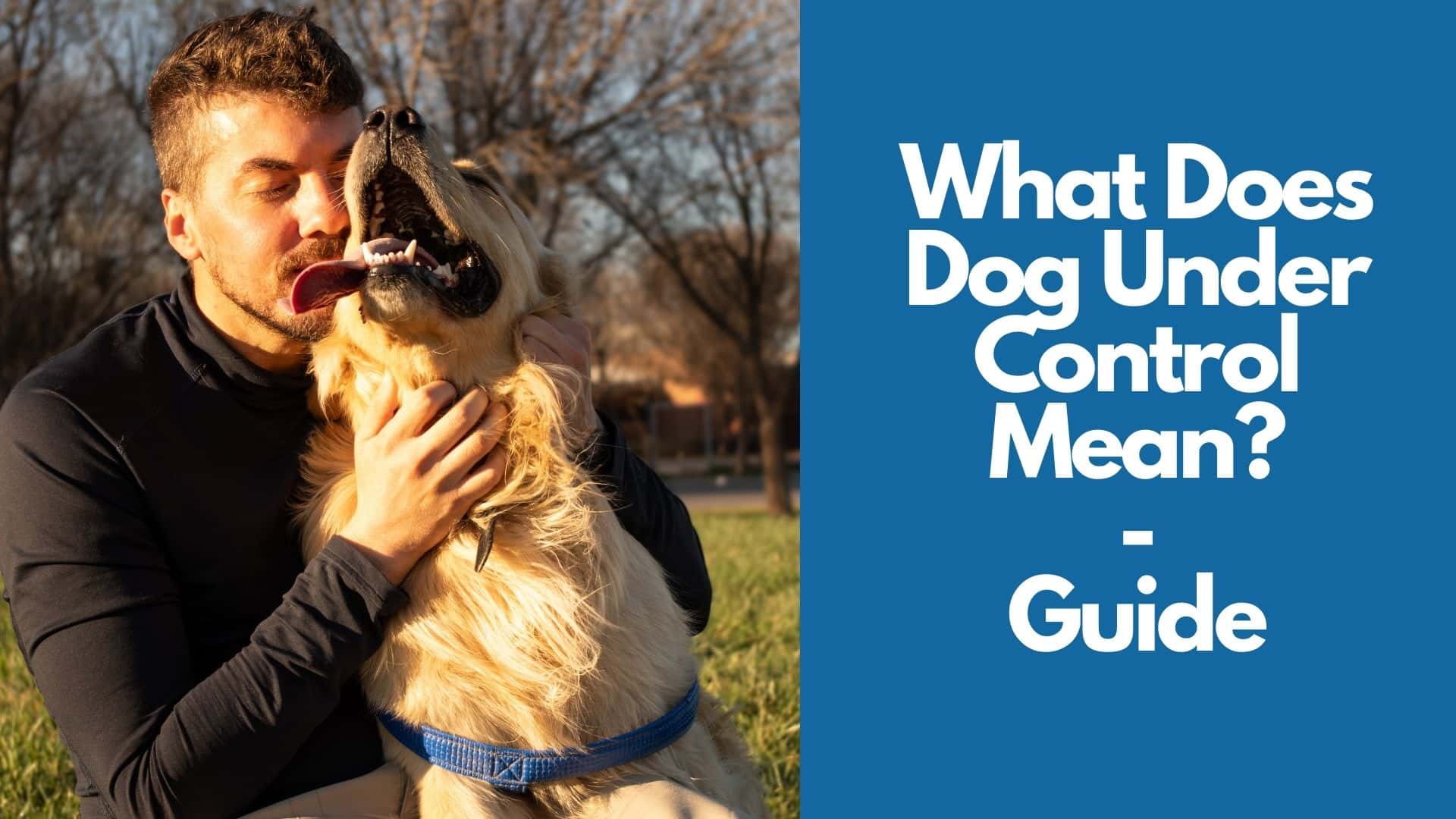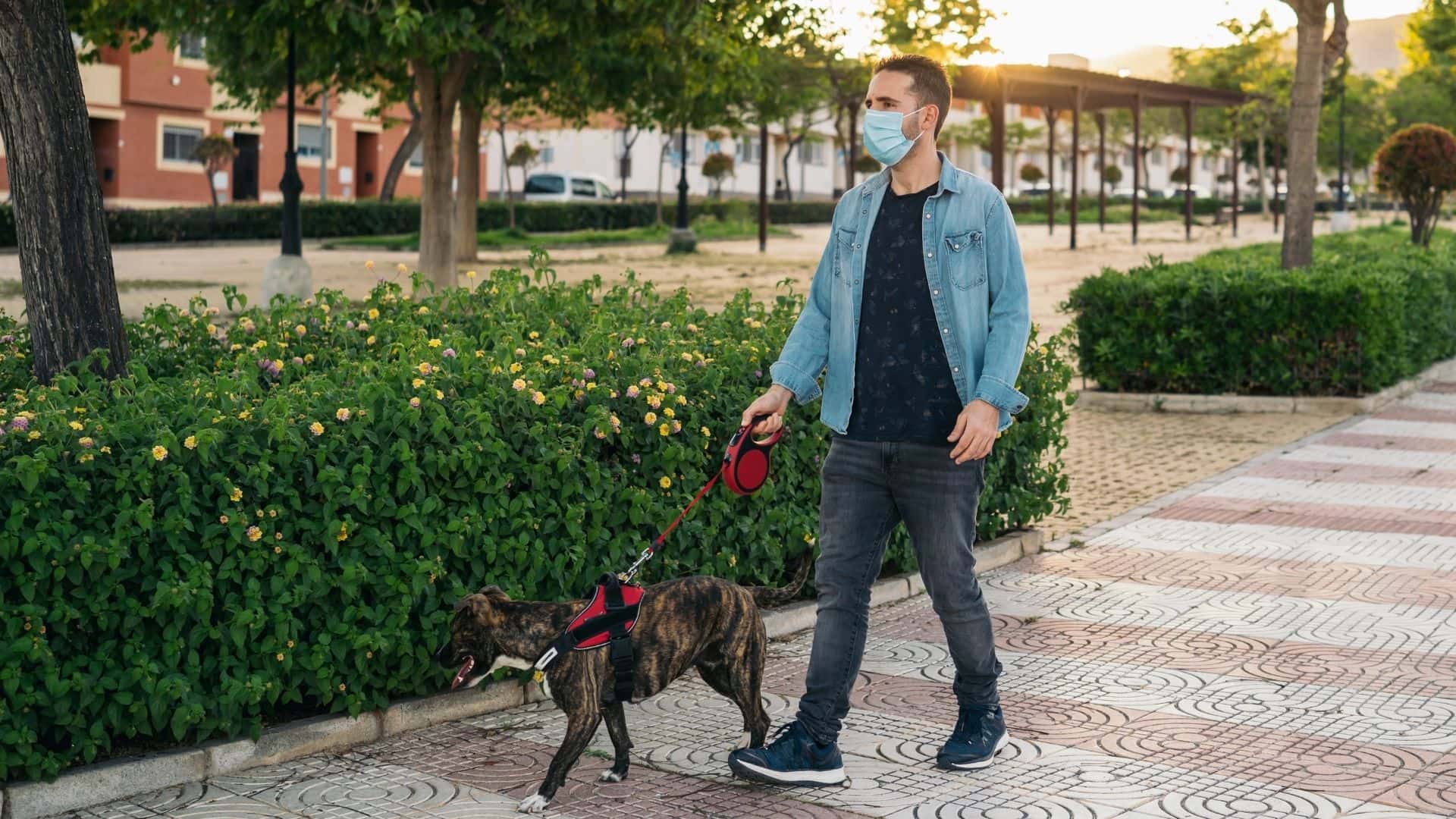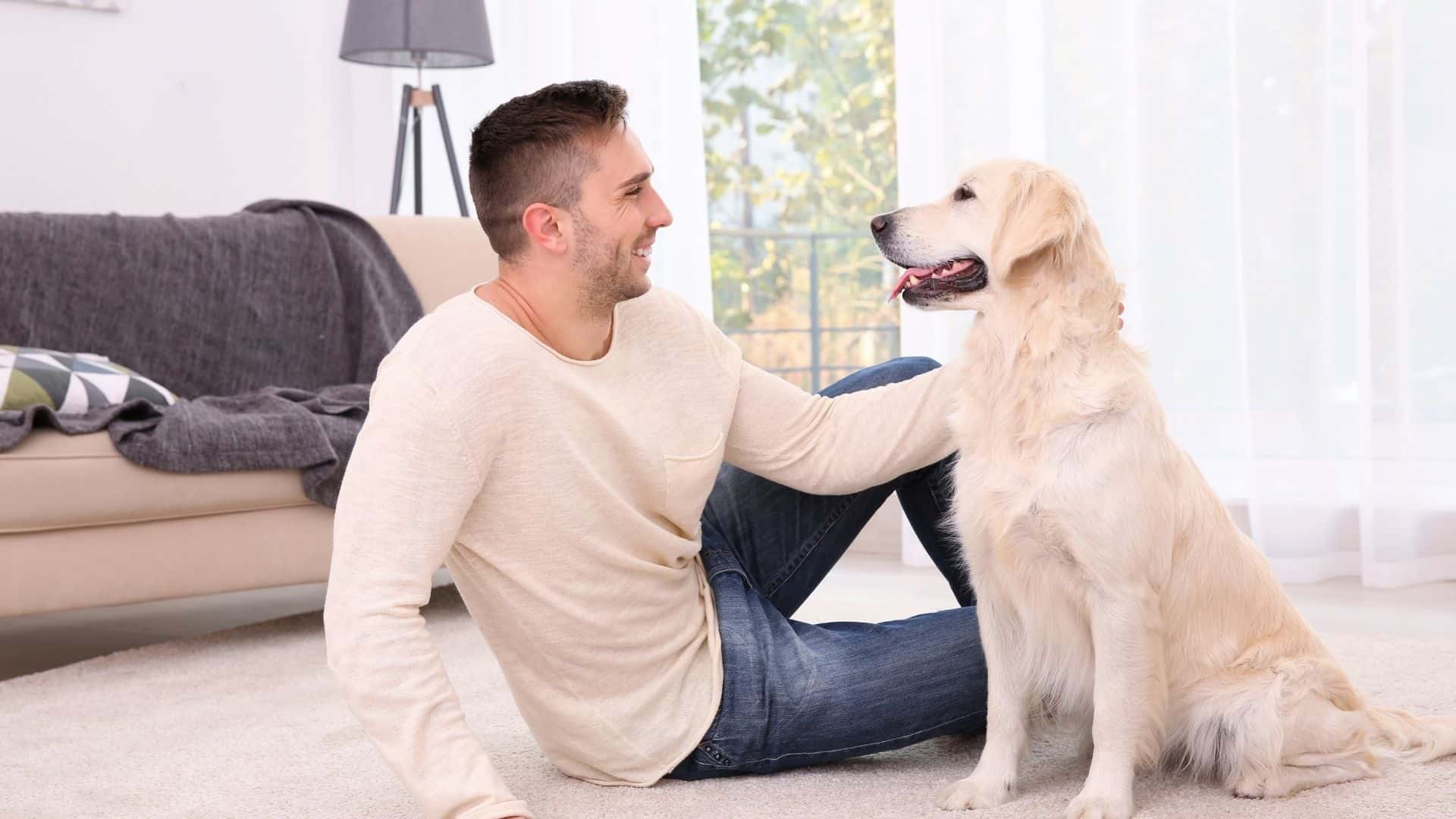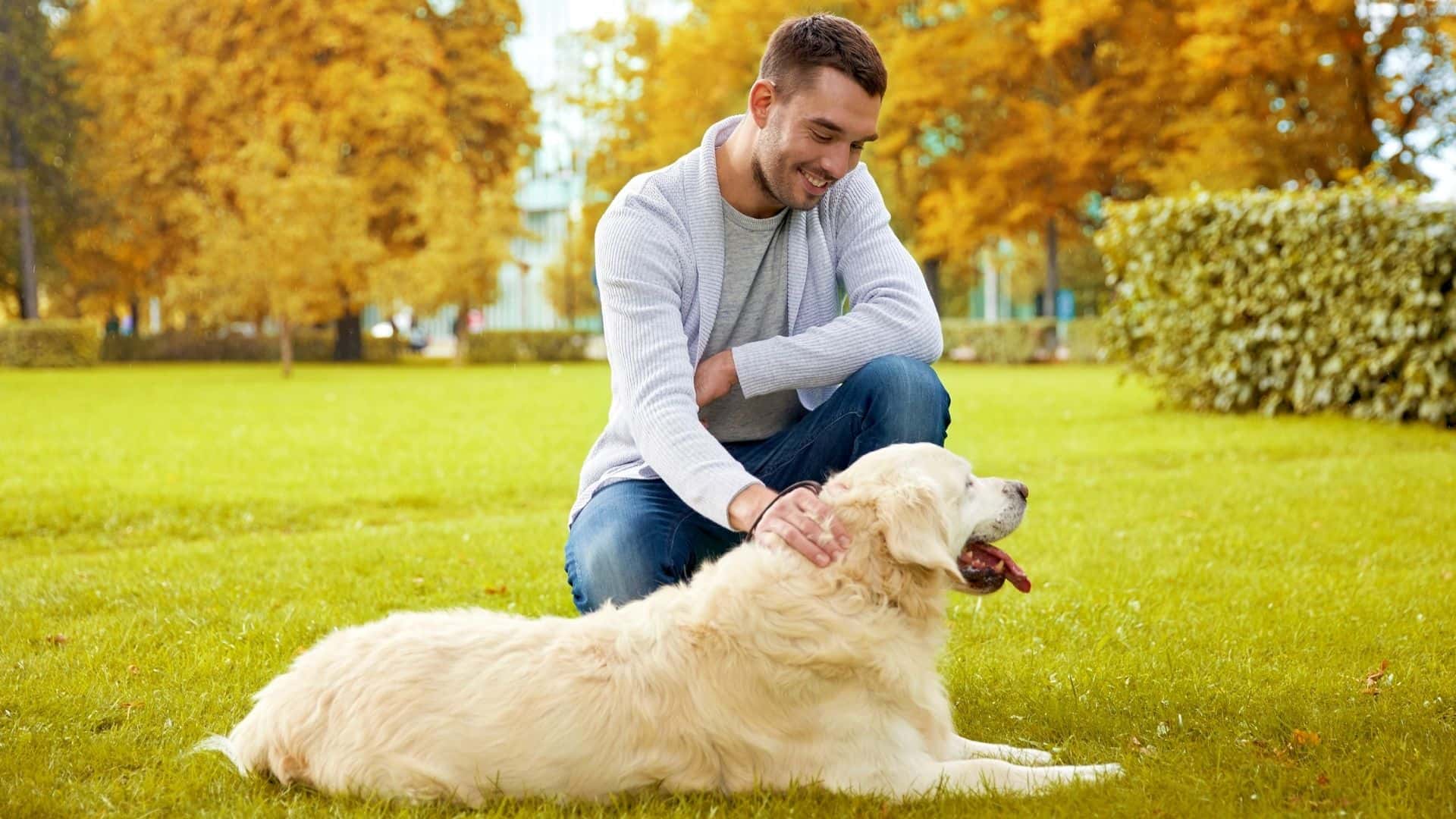Many dog owners choose to take their pets for walks on trails where it is prohibited to have the animals out of their sight or under their supervision. They believe that allowing their pets to roam freely and get more exercise will benefit them. But what exactly does it imply when someone says “dogs under control”?
A well-trained dog will always stay by your side, regardless of whether you use a leash or just your voice to command it. A well-trained dog on a leash will always come back to its owner if called. They’re not going to chase after wild animals. They’re not going to trample on other hikers. They’re not aggressive toward other dogs and won’t approach them. A well-behaved dog will stroll behind its owner the entire time.
Most of the time, my dog can easily be recalled. She misbehaves, misbehaves, and won’t listen to me when she’s tired or thrilled. As a result, I will keep her on a leash while she is in one of these moods. Because not everyone loves dogs, even if she is happy and well-behaved, I will hang on to her when we pass other trail users.
It is important to me that no one feels threatened when we are in close proximity. By reading this guide, you will be able to know, What Does Dog Under Control Mean?.

Let’s start,
What is meant by dog under control?
When a dog is on a leash and being controlled by a human, it is said to be ‘under control.’ For example, if a youngster is holding the lead of a large dog, the child will be unable to retain the dog if it tries to pull away from the lead.
Dogs do not need to be leashed all the time. Pedestrian zones and land with cattle both require dogs to be on a leash. Leashes are necessary in public parks, for example, if local governments have byelaws specifying where pets must be restrained.
Practicing recall with your dog by calling him every few minutes is a good idea if you’re working on it. Brought back your dog to you with the help of some treats or a favourite toy. You never know when you’ll run into another hiker, so keep an ear out for footsteps coming your way. Recall your dog as soon as you hear them (every second matters when teaching recall), grab their leash or collar, and take a step off course. After the other trail users have passed, shower your dog with affection and praise. You’ll quickly have a well-trained dog if you put in the time and effort.
The guideline that states, “Dogs must be under control,” is not merely an observation. It is the law. It’s there to protect dogs, but it’s also there to protect other trail users. In order to keep your pet safe, you must keep them under control at all times around other dogs and trail users. We despise hearing about dogs being harmed. Please abide by this regulation so that everyone can have a good time on the trails and be safe.
Dogs must be under effective control at all times when in the public realm, even if the dog is off-leash (such as a dog park).
The Domestic Animals Act of 2000 (the Act) defines effective dog control as the ability of a person to stop a dog from approaching other animals or persons by either preventing the dog from:
- Using a leash to restrict the dog or confining it in some other way;
- Being able to see the dog and have the dog respond to commands.
A $250 fine may be levied if you fail to keep control of your dog in public. Put your dog on a leash if you’re unsure.
Effective control means that you can stop your dog from doing anything by using your methods of control. If your dog is free and unrestrained, you must communicate with him solely through vocal commands, and the dog’s response should be immediate. In Port Philip, this is an extremely unusual talent.
The majority of owners have zero influence! When there are cars and highways nearby, how do they manage to let their dogs off leash? Do they actually care about their dogs? Off-leash time is dangerous if you can’t communicate with your dog. You’ll never know if it’ll react negatively to people, other dogs, or even natural wildlife if you let it roam free. Unlike cats, dogs are carnivores with incisor-like teeth and claws.
It was decided that Serval Cats and Hyenas could not freely roam the parks while their owners walked about in the distance. What is the point of allowing dogs to do this? The issue is that other people aren’t familiar with the dog’s habits or quirks, so how can we tell if a dog is going to attack us when it’s barking its head off? ‘Oh, he won’t hurt you, says the owner.’ Okay, in retrospect!
What are dogs controlling conditions?

When a dog’s conduct isn’t what you want, you have two options: In the normal range of behaviors for one’s age and breed. Owners in these situations want assistance in understanding and implementing strategies for effectively managing the behaviors. 2) Behaviors that are more demanding or challenging to manage, even if they are within or just beyond what is considered typical. Mouthing, urine marking, mounting, barking, chasing, predation, or excessive activity are examples of these behaviors.
Likewise, what is normal for the breed but not suited for the family and home could fall under this heading as well (ie, mismatch). To ensure that owners have a realistic idea of what can be achieved and to execute treatment measures such as environmental management and behavior modification, behavior evaluation and counselling are required in these circumstances.
If a dog has attacked someone or caused concern for livestock, a court or council dog warden can impose further requirements. If there have been violations of the Dogs Order, a council dog warden can do the same (regardless of whether you are prosecuted for those breaches).
A dog warden may issue a notice asking you to retain your dog if it has strayed, assaulted someone, livestock, or someone else’s pet, or if it has been out of control on certain highways or area where there is livestock.
When in a public setting, use a muzzle.
- When in a public place, under control (that is, on a leash and restrained by someone powerful enough to hold the dog)
- When not in control, kept safely inside a building, yard, or other enclosed space
- distant from any one particular location or setting
- Within 30 days of the notice taking effect, neutered (if male)
- You may also be required to take a six-month training course after receiving the notification.
It is an infraction punishable by a fine of up to £2,500 if you violate any of these conditions and fail to take all reasonable steps to ensure that the condition is met.
A control condition (or restrictions) imposed on your property may be reviewed by the local authority after six months if you ask them to do so.
Alternatively, you can file a formal appeal with a magistrate’s court against the imposition of any control condition. Giving notice of an appeal is something you should do after consulting with an attorney who can guide you through the proper steps.
Any time you plan to sell or give away your dog after receiving an order to control it from your local council, you must notify them. The council must also be informed of the name and address of the person to whom the dog is being sold or given. If you don’t, you’ll have to pay a fine of up to £1,000!
7 signs show that your dog is not under your control
When pet parents leave their dogs alone, one of the most common complaints they hear is that their dogs are disruptive or destructive. Some of their dogs may urinate or defecate in public places. They may also chew on things or make an attempt to flee. They can be signs of house manners training issues, but they can also be signs of emotional discomfort.
When their owners are getting ready to leave, dogs with separation anxiety may become upset. In some cases, the children get agitated or depressed before or after their guardians leave. There are those who actively try to keep their guardians from departing. Separation anxiety dogs may start barking and exhibiting other distressing behaviours as soon as their owner leaves them alone—sometimes within minutes. Dog acts like it’s been a long time since he’s seen his parents as the owner arrives home!
Few symptoms to know that your dog is out of your hands are mentioned below:
1. Hyperactive
Hyperactivity disorders in dogs are possible, but extremely rare. A veterinarian examination and testing can identify hyperactive dogs, often known as dogs with attention deficit hyperactivity disorder (ADHD) or hyperkinesis. It’s difficult to train hyperactive dogs, and they don’t seem to respond well to tranquillizers.
These dogs may engage in repeated behaviors like barking or circling, and they may have gastrointestinal problems. It’s possible that if these dogs truly have ADHD, amphetamine-type medicines will have the opposite effect on them.
2. Bodily function changes
The same goes for frightened dogs and the urgent impulse to relieve themselves. After meeting a new canine buddy, your dog may be establishing his territory and reacting to the stress by urinating shortly afterward. Stress can also be indicated by a refusal to eat or a decrease in bowel function.
3. The act of avoiding or displacing another person
It’s possible that dogs will “leave” an uncomfortable circumstance by fixating on something else. Sniffing, licking, or simply turning away are all options for these creatures. Even if ignoring someone isn’t courteous, being hostile is. Do not try to force your dog to socialise with other dogs or people if he avoids it. Pay attention to what he has to say.
4. Disturbing Behaviors: Chewing, Digging, and Demolition
When left alone or separated from their guardians, some dogs with separation anxiety can gnaw on or dig at objects such as doorframes or window sills, or even destroy household items. Self-injury such as broken teeth, cut and scratched paws, and damaged nails can be the outcome of these actions. The gnawing, digging, and destruction that a dog is prone to when suffering from separation anxiety don’t happen while his owner is around.
5. Toy Leash Reactions
Assist your dog in learning to walk gently with you by providing positive reinforcement. Never let them pull because if you do, they’ll learn that it’s worth it. Maintain a short but loose leash when walking your dog. When you feel it getting tight, that’s your cue to stop. They’ll come to a halt to find out what’s up with you not moving. Reward them when they return and carry on walking. Eventually, they’ll realise that pulling will only make things worse.
6. Biting
When a dog feels frightened or anxious, they may bite. However, early socialization makes a dog more comfortable around people. Gradually expose them to various environments to make them feel protected. Spend as much time as possible with them to help them develop a sense of trust for others.
Always be on the lookout for indicators that your dog is in pain, and take action to alleviate their discomfort. Be very cautious when it comes to food and children. If your dog continues to bite despite your best efforts, consult your veterinarian or a professional pet trainer for assistance.
7. Gnashing of the teeth, licking of the lips.
A dog’s yawn indicates that he or she is either sleepy, bored, or agitated. It’s easy to tell the difference between the two by the length and intensity of the yawn when you’re under stress. When stressed, dogs may lick and drool excessively.
What should you do if your dog is not under your control?
To begin, consult with your veterinarian to rule out any underlying medical issues. Canines that are sick or hormone-deficient may have accidents in the home. It’s also possible that it’s the result of an unsuccessful housebreaking attempt. In addition, some drugs have the potential to induce negative outcomes such as car accidents. Ask your veterinarian whether any medications your dog is on are to blame.
If the issue is little, you can usually get away with doing nothing.
Every time you go out of town, give your dog a treat (like a puzzle toy stuffed with peanut butter). This is something you should only offer them while you’re not around.
Keep your arrivals and departures under wraps and without a lot of fanfare. After you get home, ignore your dog for the first few minutes.
Set out some of your most current, best-smelling attire.
Give your pet over-the-the-counter natural soothing supplements to see if they can help.
Watch how to stop aggreessive behavir of your dog | Video
What happens if you’re unable to control your dog?
If you or a loved one is unable to properly care for a pet, here are some suggestions for you to consider.
See if you can get help from friends and relatives. In many cases, family members would gladly jump in and assist you in caring for your animals at home.
Engage the services of a pet sitting company.
Hire a caregiver to help you.
Adopting a pet is an excellent alternative if you can’t keep it.
What do you call a dog that is out of control?
If your dog injures someone while out of control, it’s termed dangerously out of control. makes a person fear they will be injured.
Can dogs exert any sort of influence over their owners?
However, while the majority of dogs behave in a neutral or submissive manner toward their humans, there are others who will engage in a dominance struggle. The opposite is also true: even if a dog is dominating, it can be friendly and even beg for attention.
In what ways can I keep my dog in check?
Once the underlying cause of the dog’s poor behavior has been identified, a variety of techniques, such as…
The use of preventative measures.
Learn about your dog’s breed and characteristics.
Do some physical activity.
Do not pay attention to what others are doing…
The need for redefinition…
Keep Calm and Carry On…
Commands to interrupt gameplay.
Socialization.
What does it imply when they say the dogs are under strict control?
Dogs should not be permitted to go off the route unless absolutely necessary. The terms “close control” and “fixed lead” are used interchangeably.
Conclusion

Don’t forget to give your pet plenty of playtime every day. When you leave, your dog will be less stressed if he is tired and content. It’s also critical to push your pet’s mental limits. Train your dog by playing fetch and other training exercises. Make use of riddles that require teamwork to solve. Both their body and their intellect will benefit from it. While you’re away, they’ll be occupied, content, and exhausted.
Bottom up
So, I hope you got the full idea on What Does Dog Under Control Mean? | Guide to Control.
Please comment below about your ideas and share this “What Does Dog Under Control Mean? | Guide to Control” article with your friends.
Stay tuned with our website to find out more exciting stuff. Don’t forget to check out our previous articles too.
Until the, Read about, Why Is My Dog Under the Weather? | Signs + Guide






